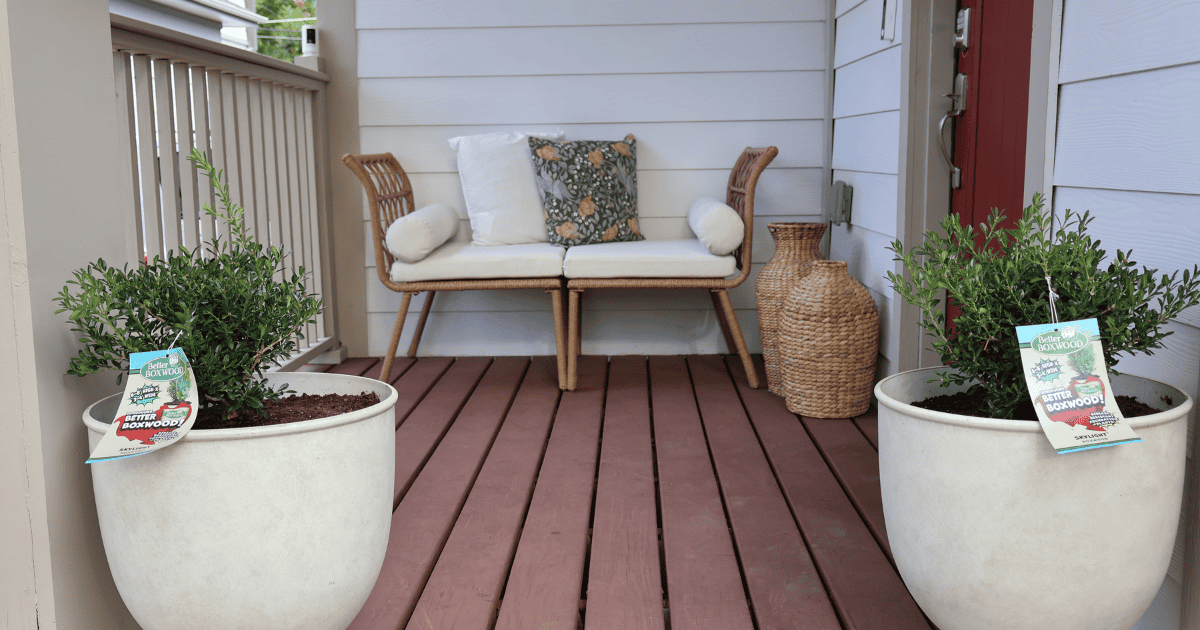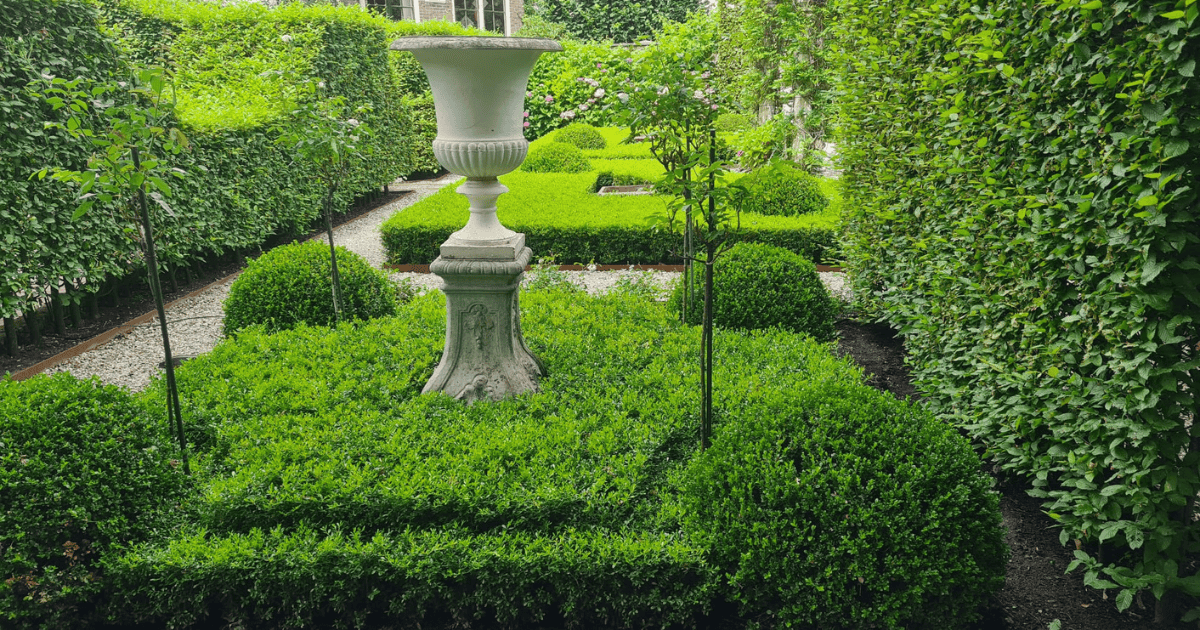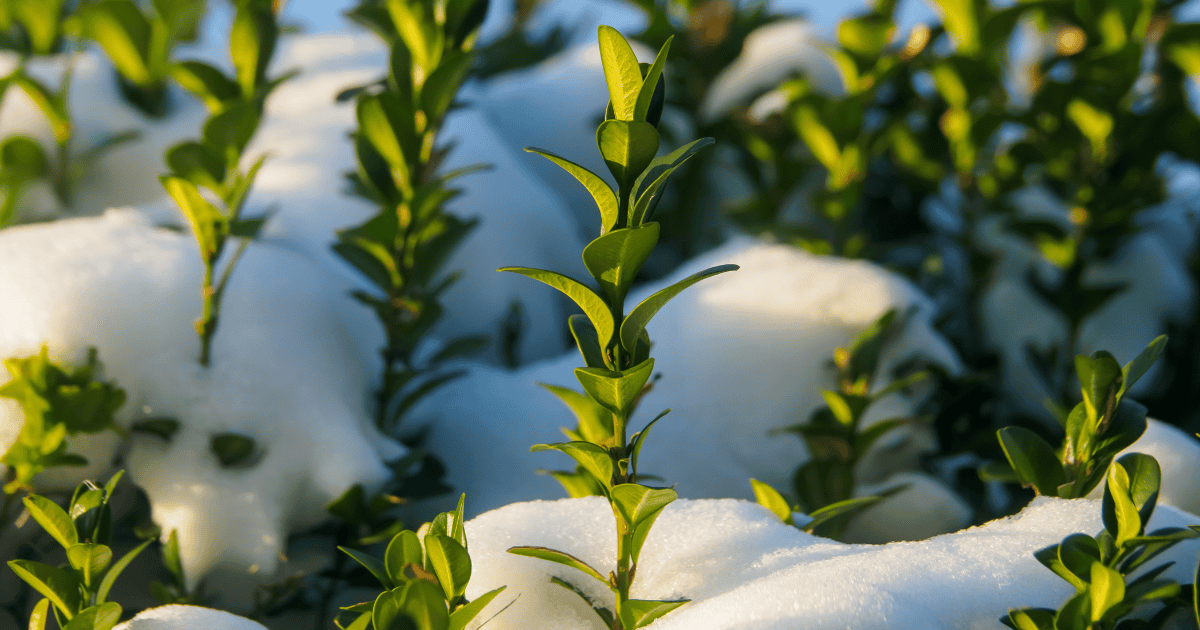
By Kim Toscano
With evergreen foliage and an affinity to shaping into topiary, boxwood is the quintessential container plant. Gardeners love how easy boxwoods are to care for—even in containers—and designers adore their versatility. From porches and patios to sprawling estates, boxwood shrubs bring lasting beauty and a touch of elegance to any garden. Learn how to plant Better Boxwood® in container gardens, planters, or pots to create dramatic entryways, stylish topiary, and privacy plantings in gardens big or small.
Which Better Boxwoods Grow Well in Containers
All four Better Boxwood® varieties adapt well to life in a container. Select the best type of boxwood for your design goals. To provide privacy around a patio, fill pots and planters with the lofty Skylight™ boxwood. Compact boxwoods like Renaissance™ and Babylon Beauty™ are perfect for marking transitions in the landscape and flanking entryways. Or consider potting up a container of Heritage™ to shape as a boxwood topiary. Whichever variety you choose, give your plants the best possible start by following the planting tips below.

How to Plant a Boxwood in a Container
Now that you’ve selected a container and potting mix, planting is easy. Have all potting materials ready when you begin to plant your boxwood. This will prevent the roots from drying out during the process. Before potting, you can line the bottom of the container with landscape fabric or a paper towel to keep soil from falling through the drainage holes, but do not add gravel, Styrofoam peanuts, or other materials to the bottom of the pot as these impede drainage. Follow these simple planting steps:
- Gently slide the boxwood plant from its container to inspect the roots and find the root crown. The root crown is where the trunk/stem of the plant meets the roots. Make sure the crown is visible, as it is sometimes buried by excess potting soil. Then gently tease the root ball loose to prevent the roots from growing in a circle. If the root ball is severely compacted, use a knife or shears to loosen the roots.
- Fill the bottom of the container with enough soil such that the root crown will sit about an inch below the rim of the container once filled.
- Center the plant in the container and fill in around the sides of the root ball with more potting soil, gently tamping it as you work, until the soil surface is an inch below the rim of the container. The root crown should be just above the soil surface.
- Water the plant in well to settle the soil, adding more potting mix if necessary. Add a thin layer of mulch to the soil surface to help retain moisture and moderate temperatures.

Where to Place Boxwood Containers
Boxwood containers have long been used in the landscape to fill a variety of functions. Elongated planters filled with boxwood can be used for dividing garden rooms and creating privacy around seating areas. Paired containers are often used to flank doorways, porch steps, and otherwise mark landscape and home transitions. Urns and other large containers are commonly placed directly in garden beds to add height and create a layered effect in plantings.
Consider exposure to sun and wind when siting boxwood containers on the porch and patio or in the garden. While boxwoods tolerate full sun, container-grown plants benefit from a bit of shade, particularly in hot southern climates. Container boxwoods perform best with a northern or eastern exposure, where plants are sheltered from the hot afternoon sun. Winter winds can be particularly troubling for boxwoods and other broadleaf evergreens. Eastern exposures often provide the added benefit of protecting plants from winter wind. Boxwood containers are easy to move, so you can find their ideal home no matter the season.


